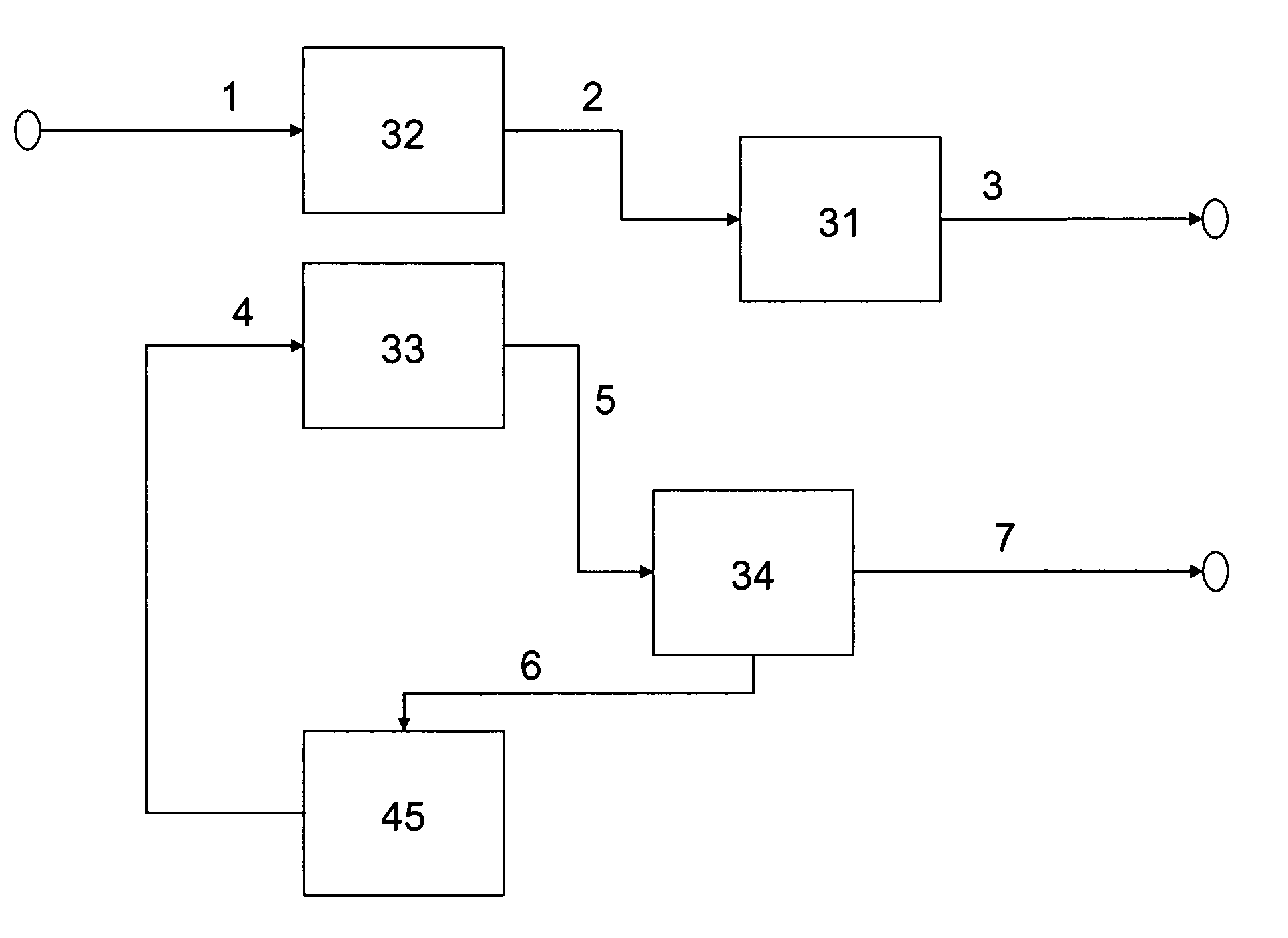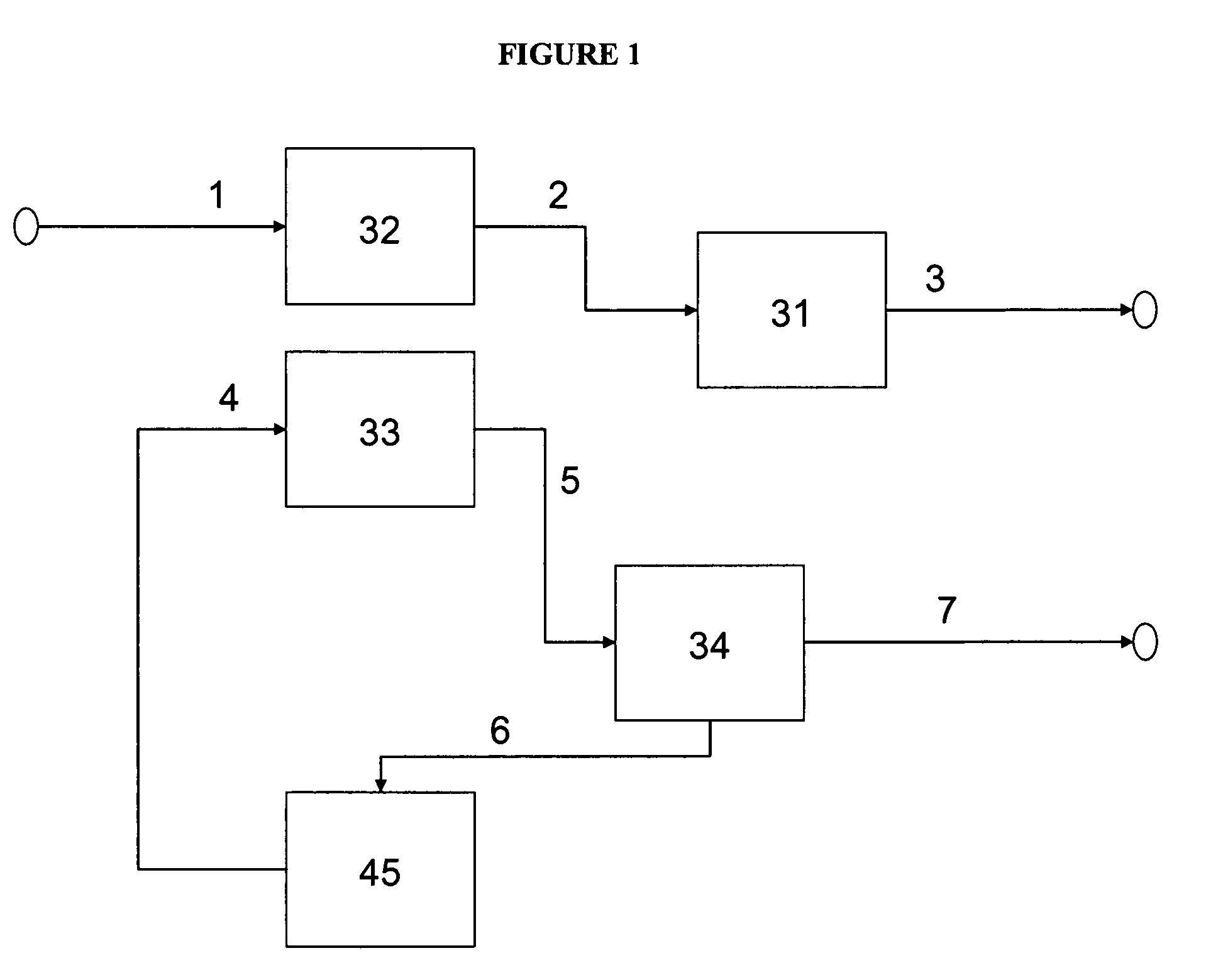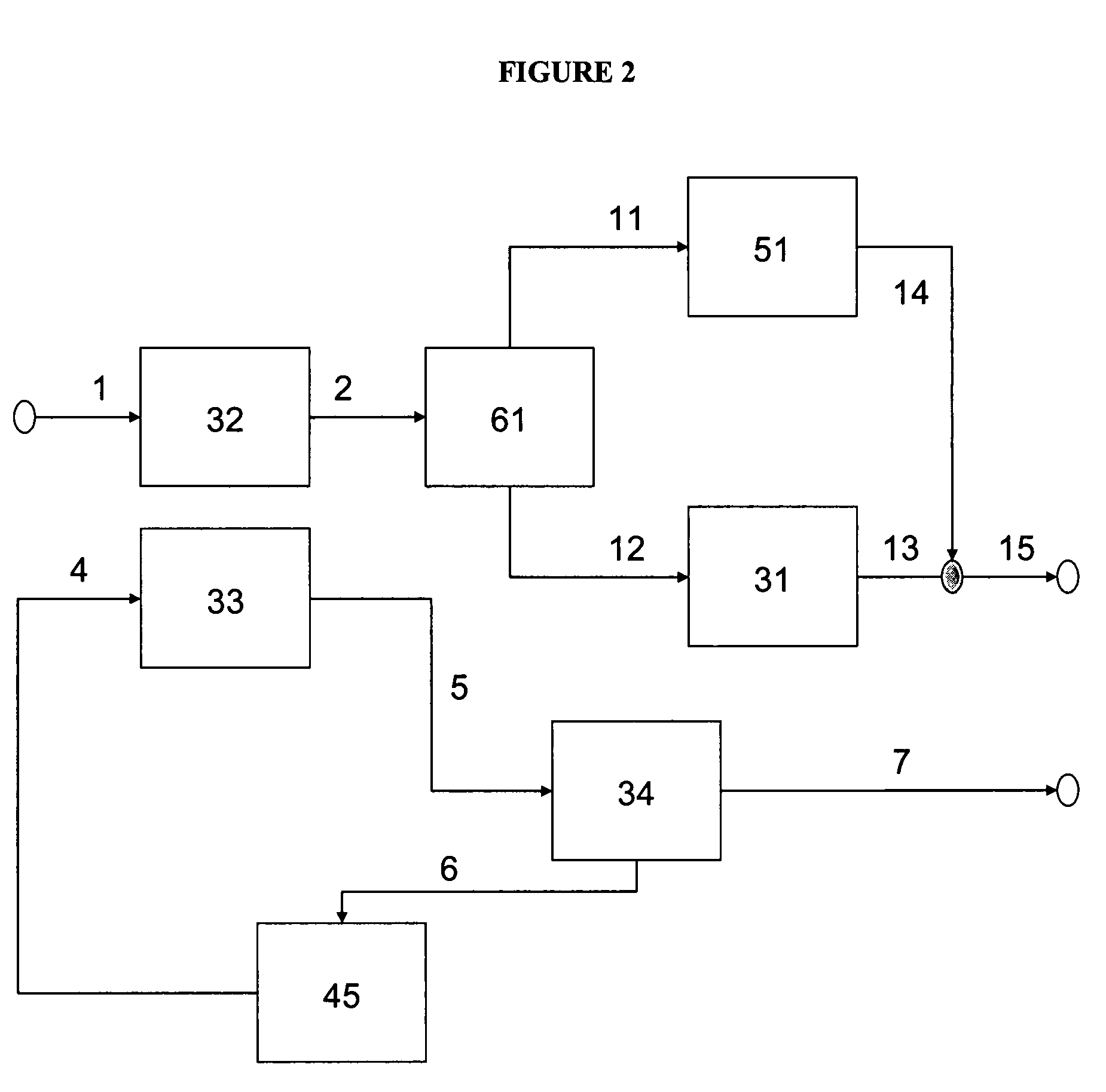Method of producing low sulfur, high octane gasoline
a high octane, gasoline technology, applied in the direction of hydrocarbon oil refining, hydrocarbon oil treatment, hydrocarbon oil refining, etc., can solve the problems of gasoline fuel contaminated with sulfur, engine and vehicle utilizing sulfur-contaminated fuels can produce harmful emissions of nitrogen oxide, sulfur oxide and particulate matter, disadvantages or limitations of using hydrodesulphurization alone for sulfur removal, and low sulfur conten
- Summary
- Abstract
- Description
- Claims
- Application Information
AI Technical Summary
Benefits of technology
Problems solved by technology
Method used
Image
Examples
example 1
[0044]1.2752 grams of silica-alumina powder (Aldrich, Grade 135) is dried at 110° C. for 6 hours prior to adsorption testing. Dried silica-alumina powder is packed into a stainless steel tube of 50 mm length and 8 mm diameter. Full range catalytically cracked naphtha having 2300 wt ppm sulfur is fed into the tube by an HPLC pump at the rate of 0.2 ml / min. The adsorption temperature is room temperature. Sulfur-specific chromatograms of the effluents, which were sampled for 10 minutes, are shown in FIG. 3. As clearly indicated in the figure, silica-alumina adsorbent very selectively removes alkylated thiophenic, benzothiophenic and alkylated benzothiophenic sulfur compounds from the CCG feedstock. After passing CCG for 100 minutes, the recovered amount of CCG is above 99.5 vol %.
Illustrative Embodiment
[0045]3,000 barrels per day (BPD) of a full boiling point range catalytically cracked gasoline produced from fluidized catalytic cracking of vacuum gas oil having 2,300 wt ppm sulfur, 25...
PUM
| Property | Measurement | Unit |
|---|---|---|
| boiling point | aaaaa | aaaaa |
| temperature | aaaaa | aaaaa |
| temperature | aaaaa | aaaaa |
Abstract
Description
Claims
Application Information
 Login to View More
Login to View More - R&D
- Intellectual Property
- Life Sciences
- Materials
- Tech Scout
- Unparalleled Data Quality
- Higher Quality Content
- 60% Fewer Hallucinations
Browse by: Latest US Patents, China's latest patents, Technical Efficacy Thesaurus, Application Domain, Technology Topic, Popular Technical Reports.
© 2025 PatSnap. All rights reserved.Legal|Privacy policy|Modern Slavery Act Transparency Statement|Sitemap|About US| Contact US: help@patsnap.com



